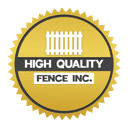The Ultimate Guide to Privacy Fence Installation Manteca

When it comes to enhancing your home’s privacy and curb appeal, installing a privacy fence can make all the difference. If you’re considering a new privacy fence installation Manteca, you’re not alone. This guide will walk you through everything you need to know, from selecting the right materials to understanding local regulations.
A well-installed privacy fence can transform your outdoor space into a tranquil retreat, shielded from prying eyes and noisy neighbors. Dive in to discover expert tips and insights that will ensure your privacy fence not only looks great but stands the test of time.
Identifying Common Fence Issues Quickly
Regular inspections help identify common fence issues quickly, saving you time and money on repairs. Here’s what to look for:
Leaning or Wobbly Posts
Leaning or wobbly posts can compromise the entire structure of your fence. Check for signs of instability, such as posts that move when pushed or have visibly shifted. Addressing these issues promptly can prevent further damage and maintain the fence’s strength.
Cracked or Broken Panels
Cracked or broken panels are not only unsightly but also weaken your fence. Look for visible damage, such as splits, breaks, or missing pieces. Replacing damaged panels quickly ensures the fence remains secure and maintains its visual appeal.
Rust or Corrosion on Metal Fences
Rust and corrosion can quickly degrade metal fences, leading to structural problems. Inspect for rust spots, flaking, or discoloration on metal components. Regular cleaning and applying a protective coating can prevent rust and extend the life of your fence.
Loose or Missing Hardware
Loose or missing hardware, such as screws, nails, or hinges, can weaken your fence’s stability. Check all connections and tighten or replace any loose or missing pieces. Ensuring hardware is secure helps maintain the fence’s integrity and functionality.
Sagging or Misaligned Gates
Sagging or misaligned gates can be a sign of wear and tear or structural issues. Inspect gates for proper alignment and smooth operation. Adjust or repair hinges and latches as needed to keep the gate functional and secure.
How to Fix Leaning Fence Posts
Fixing leaning fence posts ensures your fence remains sturdy and functional. Here are five steps to help you tackle this common issue effectively.
- Assess the Damage: Examine the leaning post to determine the extent of the problem. Check for rot, loose soil, or broken concrete around the base. Identifying the root cause will guide your repair approach and ensure a long-lasting fix.
- Remove Surrounding Soil: Dig around the base of the leaning post to expose the foundation. Removing the soil allows you to straighten the post and provides a clear view of any underlying issues that need addressing.
- Straighten the Post: Gently push the post back to its upright position. You may need assistance to ensure the post is perfectly vertical. Use a level to check for accuracy, as a straight post is crucial for fence stability.
- Reinforce with Concrete: Once the post is straight, fill the hole with concrete to secure it. Mix the concrete according to the manufacturer’s instructions and pour it around the base. Allow it to set completely before applying any pressure to the post.
- Check for Stability: After the concrete has set, ensure the post is stable by applying gentle pressure. If it moves, add more concrete or support with braces. A stable post will prevent future leaning and maintain the integrity of your fence.
Repairing Broken Fence Panels Efficiently
Broken fence panels can significantly impact both the functionality and appearance of your fence. To address this issue, start by carefully removing the damaged panel and inspecting the extent of the damage. If the panel is beyond repair, replacing it with a new panel of the same type and size is often the best solution.
For minor breaks or cracks, you can opt to patch the panel using wood filler or a similar repair product. Make sure the filler is applied smoothly and allowed to dry fully before sanding it down for a seamless finish. Secure the repaired or new panel firmly using strong screws or nails to ensure it stays in place and provides the necessary support and durability for your fence.
Solutions for Rust and Corrosion Problems
Rust and corrosion can severely impact the longevity and appearance of your fence. Here are effective solutions to tackle these common issues and keep your fence in top condition:
Regular Cleaning and Maintenance
Regularly clean your fence with a wire brush or sandpaper to remove loose rust and dirt. This helps prevent rust buildup and keeps your fence looking fresh. Follow up with a thorough rinse to remove any debris.
Applying Rust-Inhibiting Primer
After cleaning, apply a rust-inhibiting primer to the affected areas. This primer creates a protective barrier, preventing rust from spreading and prolonging the life of your fence. Make sure to choose a primer suitable for your fence material.
Using High-Quality Paint
A fresh coat of high-quality, rust-resistant paint can significantly reduce corrosion. Choose a paint designed for metal surfaces and apply it evenly to all exposed areas. This not only protects your fence but also enhances its appearance.
Regular Inspections and Repairs
Conduct regular inspections to identify early signs of rust and corrosion. Addressing these issues promptly can prevent more extensive damage. Replace any severely corroded parts and touch up minor rust spots with paint or primer.
Protective Coatings and Sealants
Applying protective coatings or sealants can offer additional protection against rust and corrosion. These products create a waterproof barrier, shielding your fence from moisture and other elements that contribute to rust formation.
Addressing Wobbly Gates and Hinges
A wobbly gate can be both frustrating and a significant security risk, affecting the overall safety and functionality of your property. Start by carefully inspecting the hinges for signs of wear, rust, or loose screws. Tighten any screws that have come loose and replace any hinges that show signs of severe damage or wear. If the gate itself appears misaligned, adjust its position by repositioning the hinges or adding shims to correct the alignment.
This will help ensure the gate swings smoothly and latches securely. Regular maintenance of the gate, including checking for any further wear or misalignment, is essential for maintaining its performance. Addressing these issues promptly will enhance the gate’s functionality, restore its security, and extend its lifespan.
Dealing with Fence Splitting and Cracking
Wood fences are prone to splitting and cracking, especially in harsh weather conditions. To address this, start by cleaning the affected area and applying wood filler to any cracks. For larger splits, you might need to use wood glue or clamps to hold the pieces together until the glue dries. After repairs, sand the area smooth and apply a protective sealant to help prevent future damage. Regularly inspecting and treating your fence can also reduce the likelihood of splitting.
Restoring Fence Stability After Storms
Storms can cause significant damage to fences, from minor issues to severe instability. After a storm, it’s crucial to inspect your fence thoroughly for any signs of damage. Look for leaning posts, broken panels, or loose fittings that might have been affected by high winds or heavy rain. To address these issues, start by reinforcing unstable posts. Adding extra concrete or gravel around the base can provide the necessary support to prevent further learning. Replace any panels that are broken or severely damaged to maintain the fence’s integrity and appearance.
Additionally, ensure that all hardware, such as screws and hinges, is securely fastened and in good condition. By taking these corrective measures, you can restore your fence’s stability and better prepare it for future weather events, ensuring it remains strong and reliable.
Preventing Future Fence Damage Effectively
Preventing future fence damage is essential for maintaining its durability and appearance. Regular upkeep and protective measures can save you from costly repairs down the line.
- Inspect your fence regularly for signs of wear or damage to catch issues early.
- Apply sealants or treatments to protect your fence from harsh weather and UV rays.
- Trim vegetation around your fence to prevent it from causing damage or rot.
- Address minor issues promptly to prevent them from escalating into major problems.
By following these steps, you can extend your fence’s lifespan and ensure it remains in great condition for years.
Replacing Missing or Damaged Fencing Boards
Missing or damaged fencing boards can create unsightly gaps that compromise both the privacy and security of your fence. To address this issue, start by carefully removing the damaged boards. Measure the space where the new boards will go, ensuring you get precise dimensions. Cut the new boards to the exact size needed to fit snugly into place.
Secure them with nails or screws, making sure they align properly with the existing boards to maintain a uniform appearance. It’s crucial that the new boards are treated to withstand weather conditions and prevent future damage. Regular inspections are essential to identify and address any damage promptly. By keeping an eye on your fence and replacing damaged boards as needed, you ensure its longevity and effectiveness.
Upgrading Fence Hardware for Durability
Upgrading your fence hardware can significantly enhance its durability and functionality. Consider replacing old hinges, latches, and screws with high-quality, weather-resistant options. Stainless steel or galvanized hardware is a great choice for resisting rust and corrosion. By investing in better hardware, you not only improve the performance of your fence but also extend its overall lifespan. Regularly check and maintain your hardware to ensure it remains in top condition.
Keeping your fence in top shape requires regular maintenance and timely repairs. By addressing common issues like leaning posts, broken panels, and rust, you can extend the lifespan of your fence and ensure it continues to serve its purpose effectively. Stay proactive with repairs and upgrades to avoid more significant problems down the line.
For professional help with all your fencing needs, contact High Quality Fence. Their experts can assist with repairs, installations, and upgrades to keep your fence looking and functioning its best. Reach out today at 209-815-9015 or email info@highqualityfence.com. Visit them at 1112 N. Main Street #171, Manteca, CA 95336 for quality service.

